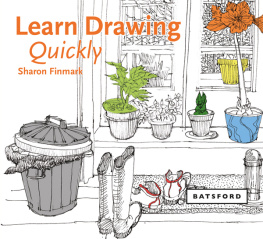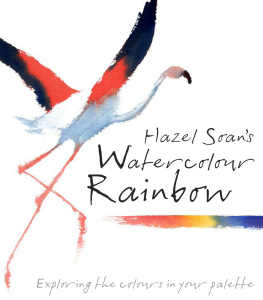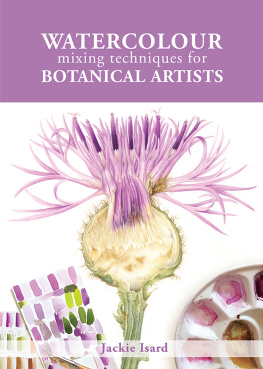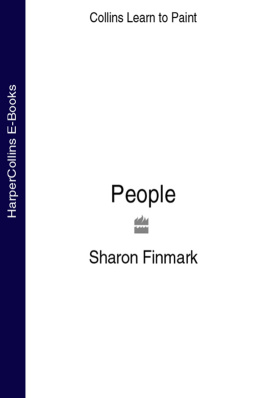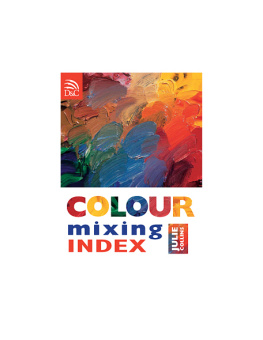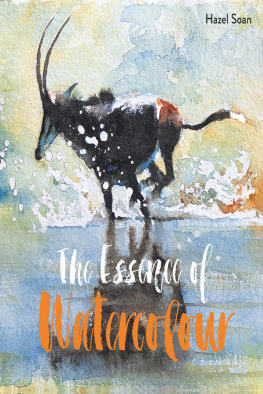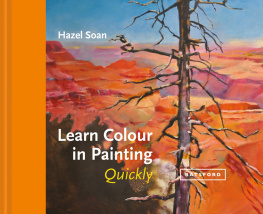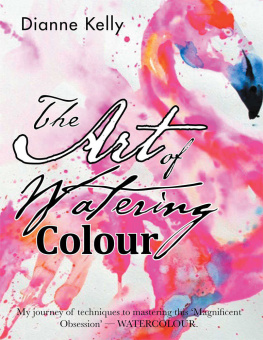More Great Titles from Batsford




STORMY SKY
Very warm complementary colours were used in the foreground to convey a sense of distance. The sweep of Permanent Rose at the horizon lends drama to the scene.

FRUIT AND VEG
Red and green create a wonderful contrast. Notice how just a touch of the red provides relief from the varieties of green.


CITY ROOFTOPS
Although composed of subtle earths and neutral colours, the shadows are vital in this painting. They hint at the complex labyrinth of streets and emphasize perspective, especially from a birds-eye view.
INTRODUCTION
A well-stocked art supplies shop can send a novice artist well-nigh dizzy with excitement. There will be ranks of beautiful brushes and a range of papers on display and, of course, rows of tempting pigments in luscious colours. However, succumbing to the temptation to buy every colour that makes you itch to use it will not make you a good artist; that will come from learning how to use a much smaller palette with skill.
Understanding colour
Our response to colour is very personal, depending on our preferences. However, it is generally accepted that certain colours have a particular psychological impact on us, so to produce works that evoke an emotional response in the viewer an artist must understand how to use colour effectively.
With watercolour, you have access to a very versatile range of colours. A transparent quality can be achieved simply by diluting your pigment in water; with plenty of dilution you can produce the palest and most delicate of washes or you can choose instead to use the pigment straight from the tube to give intense, brilliant colours. The colours of the tubes or pans in your paintbox invite you to use them just as they are, but you will soon want to mix your own colours too.
A painting gains unity and coherence from a limited range of colours, so resist the temptation to buy a lot of pigments it is better to choose carefully and mix the additional colours you need. You will see from the paintings in this book how wide a range you can achieve from just a few pigments.

CASUAL NUDE WOMAN
A limited palette was used to create the lovely warm skintones in this nude study.
THE LANGUAGE OF COLOUR
The language used to describe paint is often confusing, but dont let that concern you too much just practising and seeing what the colours produce will help to make everything clear. The terms below are ones you will commonly encounter.
Achromatic Lacking true colour; black, white and grey are considered to be achromatic, or neutral.
Adjacent/analogous The colours that neighbour each other on the colour wheel; for example, a colour scheme that used reds, oranges and yellows would be described as analogous.
Colour family Colours of the same hue, such as the range of reds or blues.
Complementary The colours that are opposite each other on the colour wheel, such as yellow and violet ().
High key/low key Bright, light colours are described as high key; subdued, dark ones are low key ().
Hue The name of the colour, such as yellow or blue.
Monochromatic A painting made with just one colour in different tonal values. In traditional watercolours a painting was often begun using only browns and was then overlaid with colour. Today, a monochromatic underpainting is more commonly used in oils and acrylics.
Neutral Greys, browns, earth colours and similar mixes are known as neutrals ().
Saturation The intensity of a colour.
Shade A darker colour of the original hue.
Tint A colour lightened with white. This is more often used in gouache, acrylics and oils. Watercolours work better applied transparent and luminous, so the paint is usually made a lighter colour by adding water.
Tone The lightness or darkness of a colour. Some colours will always be lighter than others; the deepest yellow will not be as dark as a deep blue, for example, but a paler blue can be the same tone as a yellow.
Value How light or dark in tone a colour appears.

Three ways of mixing watercolours
Most watercolour paintboxes contain two pigments in each primary colour red, yellow and blue one in a warm and one in a cool version. The concept of warm and cool colours is an important one, as it is fundamental to successful colour mixing. Cadmium Red, Cadmium Yellow and Ultramarine are warm, while Alizarin Crimson, Prussian Blue and Lemon Yellow are cool (). These are the colours you should get to know best and the ones you should use for your first experiments in colour mixing.
There are three different ways for artists to mix watercolours, each producing a different effect.
1. PALETTE MIXING
By mixing pigments in the palette you can make a graduated range of colours, influencing them by altering the proportions of the colours in the mix. When you mix two primary colours together the resulting mix is a secondary ().

2. OVERLAYING
In this method of mixing, a glaze of one colour is laid over a dry area of another colour to produce the new colour.

3. WET-INTO-WET
The third way of mixing is also on the paper, but on damp or wet paper so that one colour merges into the other. Where they meet they produce a new colour.

YOUR BASIC PALETTE
The key to handling colour well is to begin by exploring a basic range of colours to see what they offer you in various mixes and dilutions there is no better way to gain the confidence that will help you to paint with fluency right from the early stages of learning. When the pigments begin to seem like familiar friends you can then enjoy extending the range with some extra colours to see what they will contribute.


